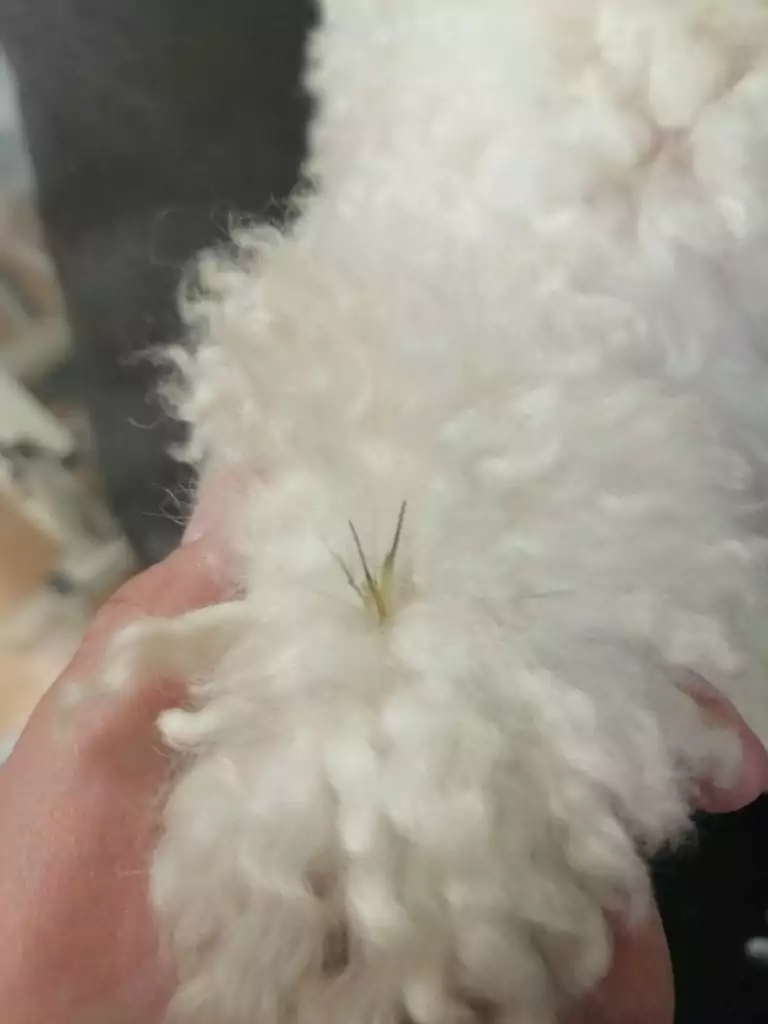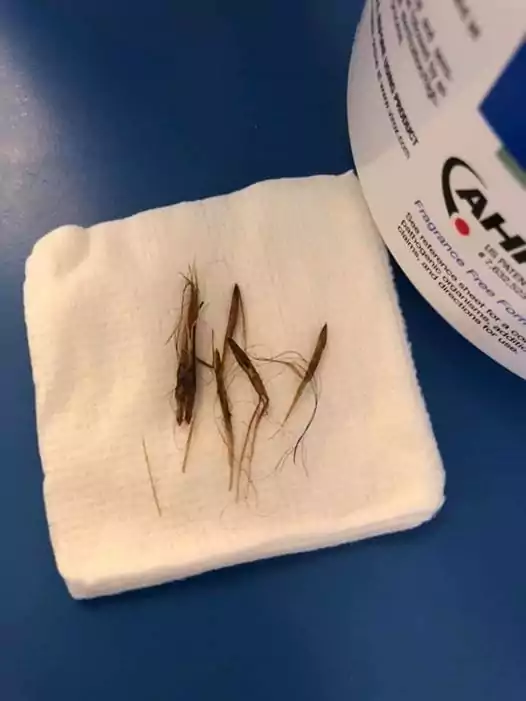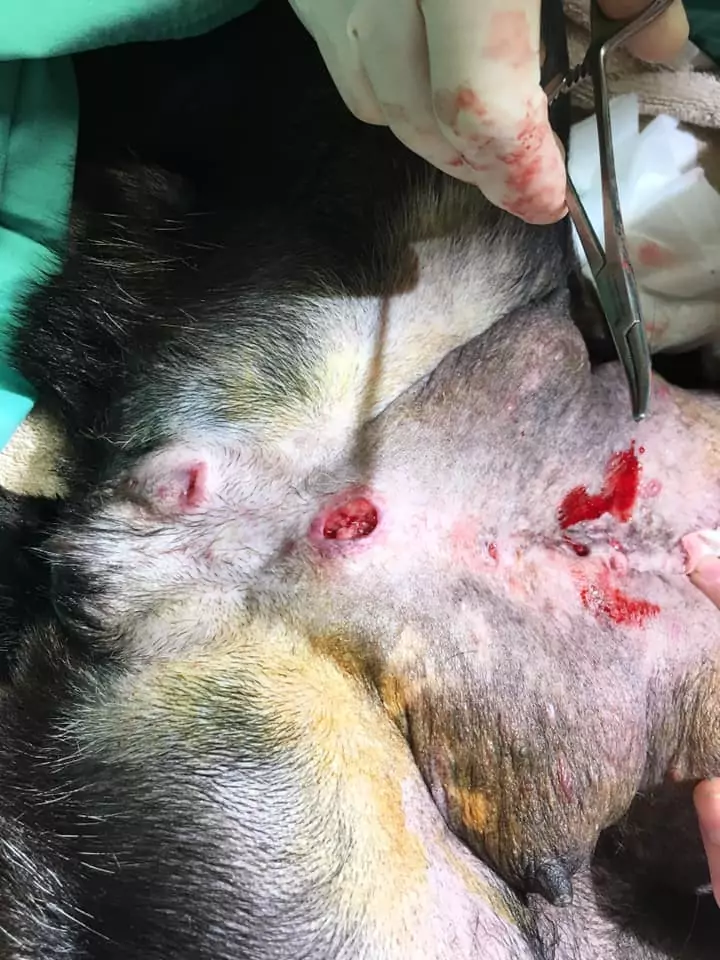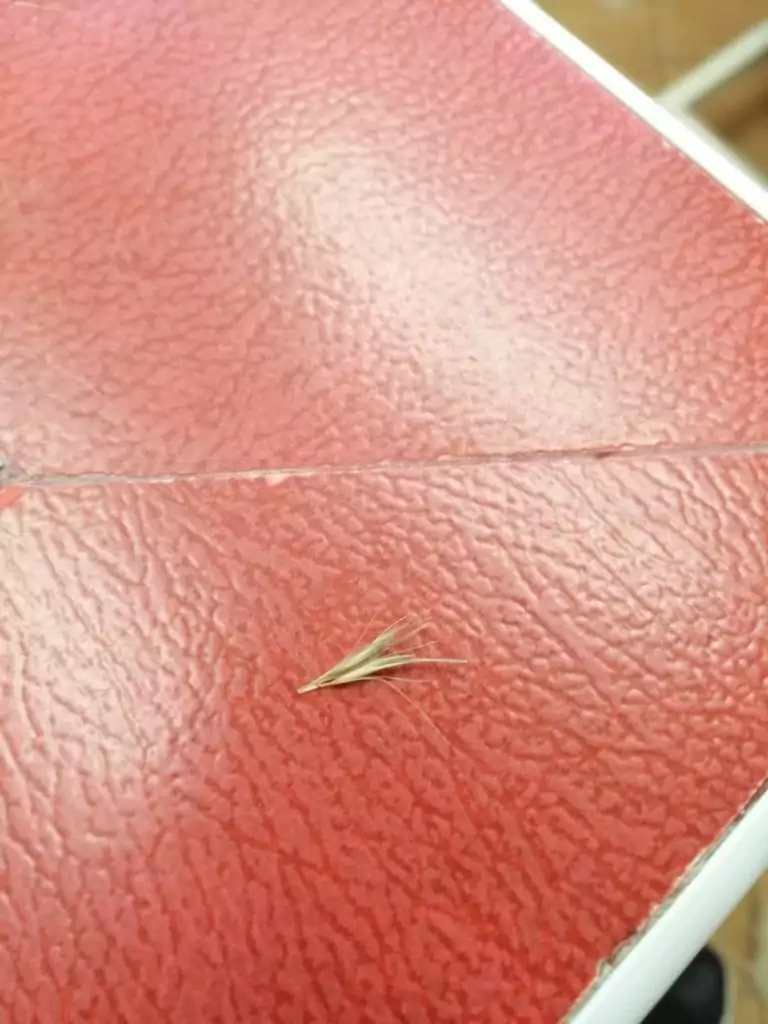The Dangers of Foxtails in Dogs is a topic that is long overdue for discussion. Is there anything more beautiful than rolling hills of grass? In some cases, the answer to that is a clear YES! At least when it is foxtail grass. When you are the owner of a dog, you realize that a trip across a field full of Foxtail grass can result in Foxtail seeds all over the dog. So what should you be aware of when encountering foxtail grass? Take a read below!

Why Are Foxtail Seeds Dangerous For Dogs?
Foxtail grass is a weed found almost all over the world in fields. You can recognize it for its spiny shape. Foxtail seed has barbed seed heads, which give the shape. The shape allows the seed to lodge and burrow itself into almost anything. That includes dogs.
Foxtail seeds can wedge themselves into almost all parts of the body. From ears and eyes to paws and the nose. Due to the shape of it, it will always move forward. Into and through the skin. This can be uncomfortable and painful for our furry friends. It can also cause infections that will need medical attention.

What Are The Signs Of Foxtail Seeds Being Stuck On Your Dog?
It can be difficult to find Foxtails that may have gotten stuck on your dog. But, there are signs to look for.
How to Tell if Your Dog Has a Foxtail in Their Ear
Excessive head shaking is the most obvious sign when a Foxtail seed is inside the ear. Other signs are head-tilt, pawing at the ear(s), and in some cases redness and/or discharge from the ear.
Remember, the Foxtail seed may be so far into the ear that you can’t see it. In that case, contact a veterinarian. The vet will use an otoscope to look inside the ear and determine where the seed is. As well as remove it safely.
How to Tell if Your Dog Has a Foxtail in Their Paw
Foxtail seeds can also lodge themselves into the fine skin between the toes. The signs of this will often be limping or licking of the area. Some dogs may even bite their toes due to discomfort!
How to Tell if Your Dog Has a Foxtail stuck in their nose or inhaled one
If a Foxtail seed is stuck in the nose or even inhaled, it can be very uncomfortable for the dog. Signs of this will often be sneezing, coughing, or even gagging.

How to Tell if Your Dog Has a Foxtail in Their Eye
Often if a seed is stuck in the eye, the signs are quite easy to see. These include redness, swelling, and discharge from the eye. In this case, veterinary care should be sought out immediately.
How to Tell if Your Dog Has a Foxtail in Their Genitalia
It seems almost impossible, but Foxtail seeds can even get stuck in your dog’s genitals. Signs of this will often be incessant licking of the area. As well as redness and swelling. At times bloody urine is also a symptom.
Can You Remove Foxtail Seeds yourself?
Contact a qualified veterinarian if you cannot remove the Foxtail seed easily yourself. In some cases, like if the seed is stuck in the ears or eyes, a veterinarian should be consulted no matter what.
In some cases, when suspecting that a Foxtail seed has gotten lodged into your dog’s skin, you can try to remove it yourself. You need to examine and groom your dog. Check all the places mentioned above. Remember, even if you find a Foxtail seed in the ear, there can also be seeds in the paws or other places as well.
Use a fine-toothed comb on your dog’s fur and look for any on the skin and other places. Use your fingers if you can remove it with ease. If the Foxtail seed has pierced the skin, use tweezers. Don’t use your fingers as it can spread bacteria to the wound. Be also careful not to leave anything broken off in the skin!
If it is not easy to remove, seek veterinary care. An embedded Foxtail seed can cause significant damage to your dog and it can even end up tragically. The veterinarian knows exactly how to remove the Foxtail seed. As well as monitoring and relieving any pain and discomfort the dog is experiencing.

There was some also in her cooter.”, from Joshua Vegerano.
What Happens If a Foxtail Is Not removed?
If Foxtail seeds aren’t removed from your dog it can become very dangerous. At first, infections could occur in the area where the seed is. This could develop into abscesses. This involves significant swelling and pain for the dog. As well as posing as a threat of the infection spreading further.
If you haven’t been able to find a Foxtail seed on your dog or are unsure of the symptoms of an infection, they are:
- Lack of appetite
- Lethargy (tiredness)
- Swelling and redness around the area
- A bad smell coming from the wound
In the worst-case scenario, if the Foxtails aren’t removed, they could travel. This means it will travel to the interior of the body. This eventually can lead up to severe conditions and even death.
This is why it is important to seek professional help if you suspect a Foxtail seed is embedded somewhere on your dog’s body.

What Can You Do To Prevent Foxtail Getting To Your Dog?
So is there anything you can do to try and prevent Foxtails embedding in your furry friend?
Especially during the foxtail season from May through December. Whenever the dog has had a walk, in open fields and even in the park you can do these things:
- Examine your dog’s coat: Brush it through and look out for Foxtails stuck in the fur. If they’re stuck in the fur, they might also be stuck elsewhere.
- Examine the skin and cavities: It’s important to remember to check the paws. Especially between the toes Also examine the mouth and gums.
- Protect your dog: You can buy face and paw protection for your dog. Dog boots are available in most pet stores. But, even if you dress your dog in protective gear, you should still check the fur and skin when home. The seeds may have gotten stuck elsewhere.
Generally, though, the dog should be kept out of overgrown grass if possible. If you don’t go into areas with Foxtail grass, the issue can be avoided altogether!

Summary
Foxtail grass looks beautiful when it covers the rolling hills. But, avoid it, if possible. It can pose a serious risk if it gets stuck on your sweet furry friend. It can cause everything from paw infections with limping, to conditions that could kill your dog. If you suspect a Foxtail seed is stuck on or in your dog, seek veterinary care immediately. The veterinarian will be able to help you both out of this sticky situation – literally!
